「茶聖」と称される千利休。その名を知らない日本人は少ないでしょう。しかし、彼が一体何を成し遂げ、なぜ天下人・豊臣秀吉の怒りを買い、自ら命を絶つに至ったのか、その本質を深く知る人は意外と少ないかもしれません。彼の生涯は、単なる茶人の物語にとどまらず、美意識、政治、そして人間の複雑な心理が絡み合う、ドラマチックな歴史の一幕です。
- わび茶の革命:利休は、高価な「唐物」を至上とする当時の価値観を覆し、質素で静かなものの中にこそ真の美を見出す「わび茶」を大成させました。これは日本の美意識に決定的な影響を与えた革命でした。
- 権力との危うい関係:織田信長、そして豊臣秀吉という二人の天下人に仕え、茶頭として絶大な信頼を得る一方で、その影響力は政治的な領域にまで及び、常に権力の中枢で危うい綱渡りを続けていました。
- 悲劇的な最期の謎:天下一の茶人として栄華を極めながら、なぜ主君である秀吉から切腹を命じられたのか。その理由は一つではなく、美意識の対立から政治的陰謀まで、様々な説が今なお議論を呼んでいます。
茶の湯に生涯を捧げた堺の商人
千利休、幼名を与四郎といい、1522年に和泉国・堺の裕福な商家に生まれました。当時の堺は、海外貿易の拠点として栄え、自由で活気あふれる自治都市。彼はこの地で、豊かな教養を身につける一環として、17歳の頃から茶の湯の世界に足を踏み入れます。
北向道陳(きたむきどうちん)や武野紹鷗(たけのじょうおう)といった当代一流の茶人に師事し、めきめきと頭角を現します。特に、紹鷗は「わび茶」の祖とされる村田珠光(むらたじゅこう)の精神を受け継いでおり、利休のその後の思想に大きな影響を与えました。商人としての才覚も持ち合わせていた利休は、家業を営みながら茶人としての名声を高め、堺の有力者たちとの交流を深めていきました。
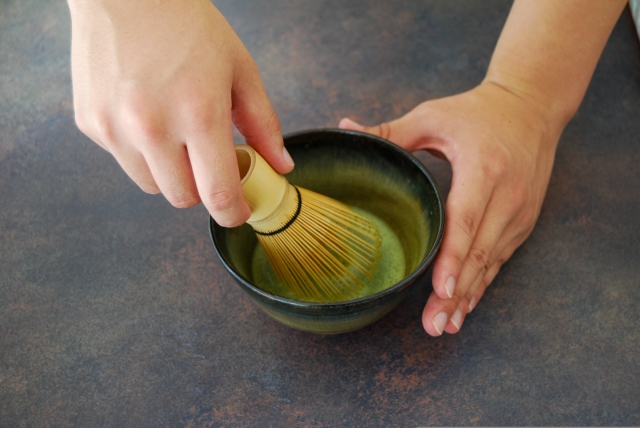
二人の天下人とわび茶の完成
利休の運命を大きく変えたのは、天下統一を目指す二人の武将との出会いでした。はじめに彼を召し抱えたのは織田信長です。信長は、茶の湯が持つ政治的な価値を鋭く見抜き、名物狩り(有名な茶器の収集)や茶会の開催を、家臣の統制や権威の誇示に利用しました。利休は、信長の茶頭(さどう)の一人として、その美意識と鑑定眼を高く評価されます。
本能寺の変で信長が倒れた後、利休はその跡を継いだ豊臣秀吉に仕えます。秀吉は信長以上に茶の湯を政治の道具として活用し、利休を側近として重用しました。黄金の茶室を造らせるなど派手好みな一面もあった秀吉ですが、一方で利休が追求する「わび茶」の世界にも深く傾倒していきます。この時期、利休は聚楽第内に屋敷を与えられ、天皇に茶を献上する禁中茶会を取り仕切るなど、その名は天下一のものとなります。彼は、狭く質素な茶室「待庵(たいあん)」を設計し、華美な唐物ではなく、歪みや素朴さを持つ国産の楽茶碗を愛用するなど、「わび茶」の様式を次々と確立。天下一の茶人として、その地位を不動のものとしたのです。
栄華からの転落、そして謎の死
しかし、その栄光は長くは続きませんでした。秀吉との間に徐々に溝が生まれ始め、天正19年(1591年)、利休は突如として秀吉の逆鱗に触れ、堺での蟄居を命じられます。そして許されることなく、京都の自邸で切腹を命じられ、70年の生涯に自ら幕を下ろしました。
一体、二人の間に何があったのでしょうか。最も有名な説は、利休が寄進した大徳寺山門の楼上に、自身の木像を設置したことが不敬にあたると秀吉を激怒させたという「大徳寺山門木像事件」です。しかし、それだけが理由とは考えにくく、他にも以下のような様々な要因が複雑に絡み合っていたと推測されています。
- 茶道に対する価値観の対立:派手な演出で権威を示したい秀吉と、静寂と質素を重んじる利休の美意識が衝突した。
- 政治的影響力への警戒:多くの大名が弟子入りし、絶大な影響力を持つ利休を、秀吉が危険視し始めた。
- 茶器売買に関する不正疑惑:利休が茶器の価格を不当に吊り上げ、私腹を肥やしているという讒言があった。
- 石田三成らとの政争:秀吉側近の官僚たちが、利休の権勢を妬み、失脚させようと画策した。
真相は今も歴史の闇の中ですが、かつては師弟であり、最高のパートナーであった二人の関係が、権力と美意識の狭間で悲劇的な結末を迎えたことだけは間違いありません。

今に受け継がれる利休の心
千利休の死後も、その精神が途絶えることはありませんでした。彼が完成させた「わび茶」の思想は、その子孫である表千家、裏千家、武者小路千家(三千家)や多くの弟子たちによって脈々と受け継がれ、現代の「茶道」の礎となっています。利休が問いかけたのは、単なるお茶の飲み方ではありません。それは、モノや見た目の豪華さに惑わされず、物事の本質を見つめ、不完全さの中に美を見出し、一期一会の出会いを大切にするという、普遍的な生き方の哲学でした。
解説ポイント①:わび茶の革命
千利休が成し遂げた最大の功績は、「わび茶」を大成させたことです。これは、当時の茶の湯の世界における一大革命でした。それまでの茶会では、中国から渡来した豪華絢爛な茶道具(唐物)を使い、客をもてなすことが主流であり、権力者たちの富と権威の象徴でもありました。
利休は、この価値観に真っ向から異を唱えます。彼は、完璧な形や高価な素材ではなく、むしろ不完全で、粗末で、静かなものの中にこそ、深い精神性と美が宿ると考えました。彼が好んだ黒楽茶碗は、意図的に歪みや凹凸が作られており、一つとして同じものはありません。また、わずか二畳という極限まで切り詰められた空間の茶室「待庵」や、客が身分に関係なく頭を下げて入らなければならない「にじり口」の採用は、茶室の中では誰もが平等であるという精神の現れです。これらはすべて、外面的な華やかさよりも、内面的な心の豊かさや静けさを重視する「わび」の精神を体現したものであり、その後の日本人の美意識の根幹を形成しました。
解説ポイント②:権力との危うい関係
千利休は単なる一介の茶人ではありませんでした。織田信長、豊臣秀吉という当代随一の権力者の側に仕え、茶頭という立場を超えて、時には政治的な相談役や側近としての役割も担っていたとされています。特に秀吉政権下では、その影響力は絶大で、利休への弟子入りを望む大名は後を絶たず、彼の口利き一つで物事が動くことさえあったと言われます。
茶の湯は、この時代、重要な政治ツールでした。茶会は、武将たちが本音で語り合う社交場であり、情報交換の場であり、時には忠誠を試す場でもありました。利休はその中心にいて、茶の湯を通じて人間関係をプロデュースし、秀吉の天下統一事業を文化面から支えました。しかし、芸術家としての純粋な美の追求者であると同時に、権力の中枢に深く関わるフィクサーでもあったという二面性が、彼の立場を極めて危ういものにしていました。その影響力が強大になりすぎることは、主君である秀吉にとって、次第に脅威として映るようになった可能性は十分に考えられます。
解説ポイント③:悲劇的な最期の謎
利休の切腹の直接的な引き金とされる「大徳寺山門木像事件」は、今日でも多くの議論があります。山門の楼上に自身の木像を置くことは、その下を通る者を足蹴にする行為と見なされ、相手が天下人の秀吉であれば死罪に値するほどの侮辱と解釈されても不思議ではありません。しかし、なぜ利休がそのような行動に出たのか、あるいは本当にそれが秀吉を激怒させた唯一の理由だったのかは、依然として謎に包まれています。
近年では、単一の事件が原因ではなく、それまでに積み重なった様々な対立要因が複合的に作用した結果であるという見方が有力です。例えば、秀吉の朝鮮出兵に対して利休が批判的であったという説、利休の娘を秀吉が側室に望んだが断られたという説、茶器の鑑定や売買を巡る金銭的なトラブル説など、多岐にわたります。権力者として神格化されていく秀吉と、あくまで美の探求者として自らの道を貫こうとする利休。二人の間には、もはや修復不可能な価値観の断絶が生まれていたのかもしれません。この悲劇は、絶対的な権力と、それに屈しない個人の精神(あるいは美意識)が衝突した時に何が起こるかを物語る、歴史的な事例として今なお人々の関心を引きつけてやみません。
参考文献
- 千利休ってどんな人物? 生涯や人物像が分かるエピソードを紹介【親子で歴史を学ぶ】 – HugKum
- 千利休の生涯と茶道への影響:わび茶の祖を深掘り – 山本山
- 千利休とは?天下一の茶聖利休の生涯や逸話を紹介 – 古美術八光堂
- 千利休が切腹させられたのはなぜ?政治利用された「茶の湯」と謎の処刑理由 – Japaaan
- 千利休の切腹 – 桃山学院大学
【English Article】
Sen no Rikyū: The Life of Japan’s Tea Saint, the Art of Wabi-Cha, and the Reason for His Tragic Death
Sen no Rikyū is revered as the “Saint of Tea” in Japan. While his name is widely known, few may truly understand what he accomplished or why he ultimately incurred the wrath of the powerful ruler Toyotomi Hideyoshi, leading to his own tragic death. His life is more than just the story of a tea master; it’s a dramatic chapter of history weaving together aesthetics, politics, and the complex human psyche.
- The Wabi-cha Revolution: Rikyū overturned the prevailing values of his time, which prized expensive, imported “karamono” tea utensils. He perfected “wabi-cha,” a style that finds true beauty in simplicity and quietude, a revolution that decisively shaped Japanese aesthetics.
- A Perilous Relationship with Power: Serving two of the most powerful figures in Japanese history, Oda Nobunaga and Toyotomi Hideyoshi, he gained immense trust as a tea master. However, his influence extended into the political sphere, forcing him to walk a constant tightrope at the center of power.
- The Mystery of His Tragic Fate: Despite reaching the pinnacle of success as the foremost tea master, why was he ordered to commit seppuku (ritual suicide) by his own lord, Hideyoshi? The reason is not singular, with various theories—from a clash of aesthetics to political conspiracy—still debated today.
A Sakai Merchant Who Devoted His Life to the Way of Tea
Sen no Rikyū, known in his childhood as Yoshirō, was born in 1522 into a wealthy merchant family in Sakai. At the time, Sakai was a vibrant, self-governing port city flourishing through foreign trade. It was in this liberal environment that he, as part of a cultured upbringing, stepped into the world of the tea ceremony around the age of 17.
He studied under the leading tea masters of the day, such as Kitamuki Dōchin and Takeno Jōō, and quickly distinguished himself. Jōō, in particular, was a successor to the spirit of Murata Jukō, the founder of “wabi-cha,” and had a profound impact on Rikyū’s later philosophy. Possessing a sharp business acumen, Rikyū managed his family’s business while building his reputation as a man of tea, deepening his connections with Sakai’s influential figures.
The Two Rulers and the Perfection of Wabi-cha
Rikyū’s destiny was forever changed by his encounters with two military leaders aiming to unify Japan. The first to employ him was Oda Nobunaga. Nobunaga astutely recognized the political value of the tea ceremony, using the collection of famous tea utensils (“meibutsugari”) and the hosting of tea gatherings to control his vassals and display his authority. Rikyū was highly valued as one of Nobunaga’s tea masters for his aesthetic sense and connoisseurship.
After Nobunaga’s death in the Honnō-ji Incident, Rikyū went on to serve his successor, Toyotomi Hideyoshi. Hideyoshi utilized the tea ceremony as a political tool even more actively than Nobunaga and heavily relied on Rikyū as a close confidant. While Hideyoshi had a flamboyant side, famously commissioning a golden tea room, he was also deeply drawn to the world of “wabi-cha” that Rikyū pursued. During this period, Rikyū was granted a residence within the Jurakudai palace and orchestrated a tea ceremony for the emperor, cementing his reputation as the greatest tea master in the land. He designed the “Tai-an,” a small, simple tea house, and favored domestically produced Raku ware, with its characteristic distortions and simplicity, over ornate imported utensils. By doing so, he firmly established the style of “wabi-cha” and his unassailable position as the master of tea.
From Glory to Downfall and a Mysterious Death
However, his glory was not to last. A rift gradually formed between him and Hideyoshi, and in 1591, Rikyū suddenly fell out of favor. He was ordered into exile in Sakai and, without being pardoned, was commanded to commit seppuku at his Kyoto residence, bringing his 70-year life to a self-inflicted end.
What truly happened between the two men? The most famous theory is the “Daitoku-ji Temple Gate Incident,” where Rikyū allegedly enraged Hideyoshi by placing a wooden statue of himself on the upper floor of the temple gate he had donated, an act of supreme disrespect. However, it is unlikely this was the sole reason. It is now believed that a complex web of factors was at play, including:
- A Clash of Aesthetic Values: A conflict between Hideyoshi, who wanted to use flamboyant displays to show his authority, and Rikyū, who valued quietude and simplicity.
- Wariness of Political Influence: Hideyoshi grew wary of Rikyū’s immense influence, as many powerful daimyō (feudal lords) had become his disciples.
- Allegations of Profiteering: Slanderous rumors that Rikyū was using his position to unfairly inflate the price of tea utensils for personal gain.
- Political Strife: A power struggle with figures like Ishida Mitsunari, one of Hideyoshi’s chief administrators, who may have plotted Rikyū’s downfall out of jealousy.
The full truth remains shrouded in history, but it is clear that the relationship between the once-master-and-disciple, the perfect partners, met a tragic end, caught between power and aesthetics.
Rikyū’s Spirit, Living on Today
Even after Sen no Rikyū’s death, his spirit was not extinguished. The philosophy of “wabi-cha” that he perfected was passed down through his descendants—the Omotesenke, Urasenke, and Mushakōjisenke schools (the Sansenke)—and his many disciples, forming the foundation of the modern “Way of Tea.” What Rikyū taught was not merely how to drink tea. It was a universal philosophy of life: to see the essence of things without being deceived by material possessions or outward appearances, to find beauty in imperfection, and to cherish every encounter as a once-in-a-lifetime event.
Analysis Point ①: The Wabi-cha Revolution
Sen no Rikyū’s greatest achievement was the perfection of “wabi-cha.” This was a major revolution in the world of the tea ceremony of his time. Until then, the mainstream practice involved using gorgeous tea utensils imported from China (karamono) to entertain guests, serving as a symbol of the wealth and authority of the powerful.
Rikyū directly challenged this value system. He believed that deep spirituality and beauty reside not in perfect forms or expensive materials, but rather in things that are imperfect, humble, and quiet. The black Raku tea bowls he favored are intentionally distorted, with uneven surfaces, ensuring no two are alike. Furthermore, his creation of the “Tai-an” teahouse, a space stripped down to a mere two tatami mats, and the “nijiriguchi” (a small, crawl-through entrance) forced everyone, regardless of rank, to bow their head to enter, symbolizing the equality of all within the tea room. These innovations embodied the spirit of “wabi,” which prioritizes inner spiritual richness and tranquility over external splendor, and went on to form the very core of Japanese aesthetics.
Analysis Point ②: A Perilous Relationship with Power
Sen no Rikyū was no simple tea master. Serving at the side of the era’s most powerful rulers, Oda Nobunaga and Toyotomi Hideyoshi, he transcended his role as a tea master to become a political consultant and confidant. Under Hideyoshi’s regime, his influence was immense. It is said that countless daimyō wished to become his students and that his word alone could sway decisions.
In this era, the tea ceremony was a crucial political tool. Tea gatherings were social forums where warlords could speak frankly, exchange information, and sometimes test loyalty. Rikyū was at the center of this world, producing human relationships through the Way of Tea and supporting Hideyoshi’s unification of Japan from a cultural standpoint. However, this duality—being both a pure artist in pursuit of beauty and a fixer deeply involved in the center of power—made his position extremely precarious. As his influence grew too powerful, it is conceivable that it began to be perceived as a threat by his lord, Hideyoshi.
Analysis Point ③: The Mystery of His Tragic Fate
The “Daitoku-ji Temple Gate Incident,” considered the direct trigger for Rikyū’s seppuku, remains a subject of much debate. Placing one’s own statue on a temple gate could be interpreted as a grave insult, suggesting that all who pass beneath are being trod upon—an offense punishable by death when the insulted party is the ruler of the land. Yet, why Rikyū would commit such an act, or if it was truly the sole reason for Hideyoshi’s fury, is still a mystery.
The prevailing modern view is that his death was the result of a combination of various long-standing conflicts, rather than a single incident. There are multiple theories, including that Rikyū was critical of Hideyoshi’s planned invasion of Korea, that he refused Hideyoshi’s request to take his daughter as a concubine, and that financial troubles arose from his appraisal and sale of tea utensils. A perhaps irreparable rift in values had opened between Hideyoshi, who was becoming deified as a ruler, and Rikyū, who sought to follow his own path as a seeker of beauty. This tragedy serves as a historical case study, still capturing our interest today, of what happens when absolute power collides with an unyielding individual spirit (or aesthetic).
References
- Sen no Rikyū tte Donna Jinbutsu? Shōgai ya Jinbutsuzō ga Wakaru Episōdo o Shōkai – HugKum
- Sen no Rikyū no Shōgai to Sadō e no Eikyō: Wabi-cha no So o Fukabori – Yamamotoyama
- Sen no Rikyū to wa? Tenkaichi no Chajin Rikyū no Shōgai ya Itsuwa o Shōkai – Kobijutsu Hakkodo
- Sen no Rikyū ga Seppuku Saserareta no wa Naze? Seiji Riyō Sareta “Cha no Yu” to Nazo no Shokei Riyū – Japaaan
- Sen no Rikyū no Seppuku – Momoyama Gakuin University

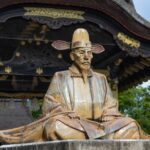
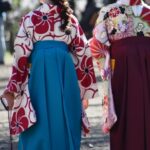
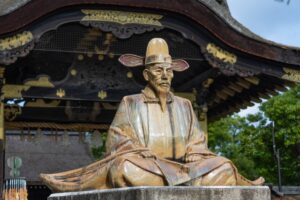
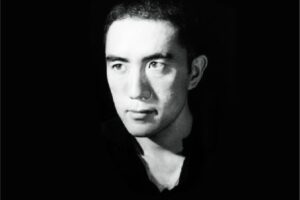
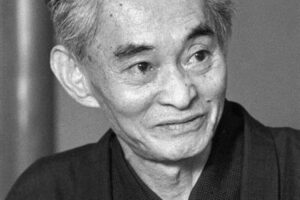
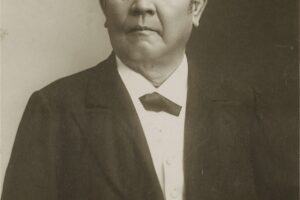
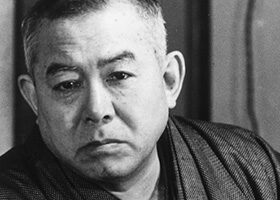
コメントを残す